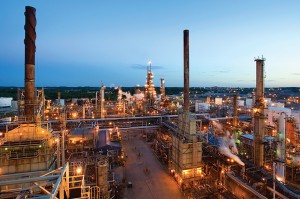In the process of hydrocracking paraffinic hydrocarbons, it is important to increase middle distillates yields in order to improve process economics. That’s why development of a highly efficient hydrocracking catalyst capable of enhancing cracking activity and middle distillate yield while also making it possible to produce a gas oil with low pour point can help improve process efficiency while remaining at low-to-moderate hydrogen partial pressures .
Of course vacuum gas oil (VGO) hydrocracking has already been an established commercialized process for decades, with recent advances in automation, catalysis and low cost hydrogen making it more affordable for even small refinery facilities, depending on circumstances. For example, since the difference between the reactivity of a paraffinic hydrocarbon and that of VGO is so significant that it is difficult to use the catalyst for the latter as it is for hydrocracking a paraffinic hydrocarbon, research and development aims at development of a highly efficient catalyst for paraffinic hydrocarbons.
Other research has demonstrated hydrocracking of paraffinic hydrocarbons using a catalyst comprising platinum loaded into a crystalline aluminosilicate (zeolite). However, the crystalline aluminosilicate catalyst is at a satisfactorily higher level of cracking activity but has disadvantages that the middle distillate yield is low and the resulting gas oil fails to obtain a sufficient pour point. On the other hand, amorphous solid acid catalysts, a typical example of which is silica alumina, are at satisfactorily higher level in achieving middle distillate yield along with low pour point of the resulting gas oil but low in cracking activity.
Inorganic contaminants (e.g., nitrogen) in refinery feedstocks are often poisons for hydroprocessing catalysts. The source of these contaminants is often the crude itself, with different contaminants associated with various crude sources. Some contaminants are introduced during normal refining processes or from upset conditions. According to researchers, the five main causes of catalyst deactivation are poisoning, fouling, thermal degradation, mechanical damage and corrosion/ leaching by the reaction mixture. In a VGO hydrocracking reactor, poisoning by metals such as Ni and V, and coke deposition have major roles in the catalyst deactivation.
To control this growing problem, increasing volumes of catalysts with high capacity to adsorb contaminants at the top of the reactor’s catalyst bed are being employed. These sacrificial catalyst layers protect downstream catalysts from the poisoning effects, allowing them to retain their high activity for a longer time and increase cycle length.








Leave a Reply
You must be logged in to post a comment.